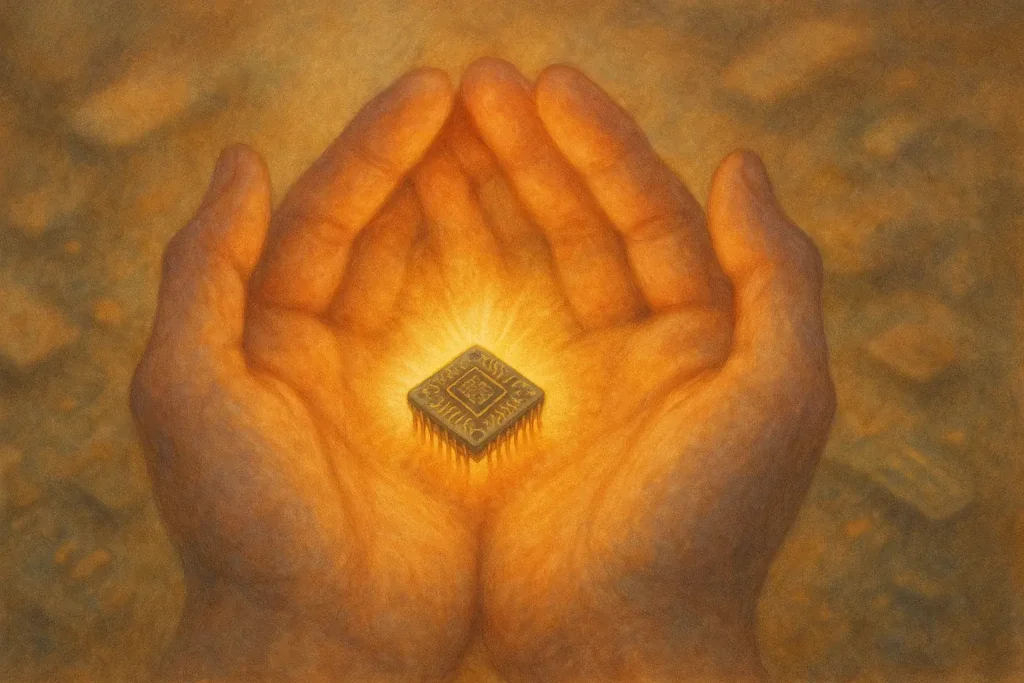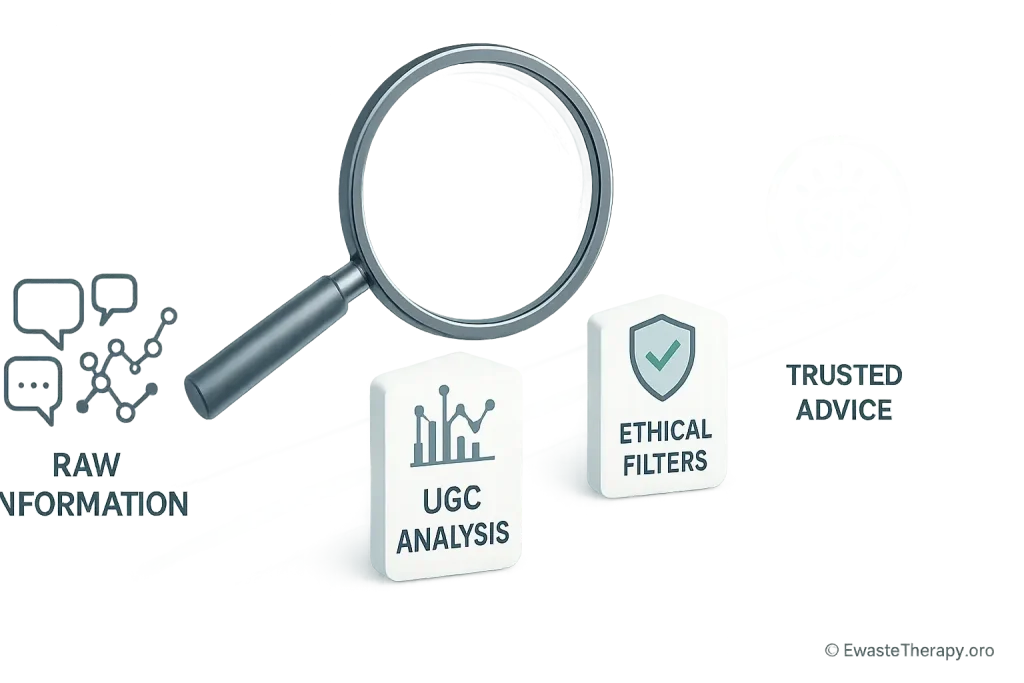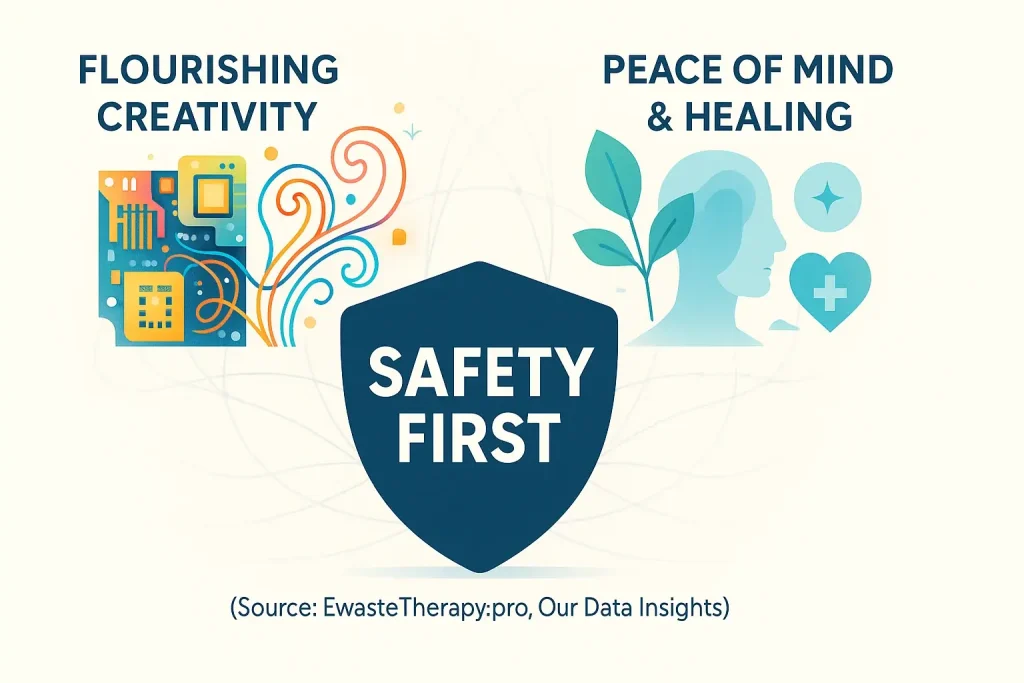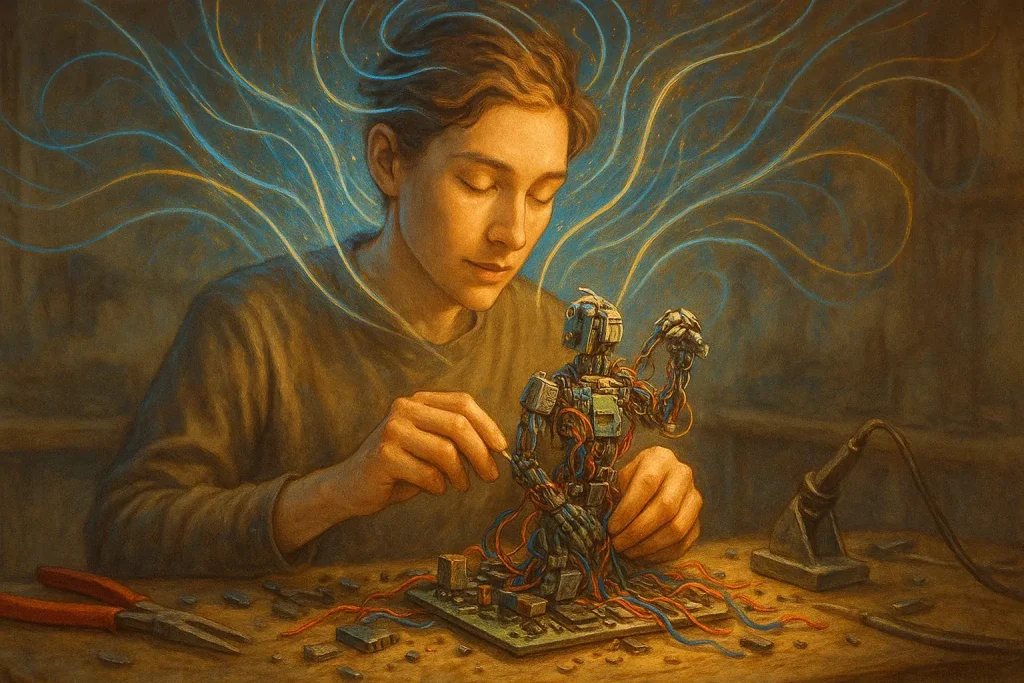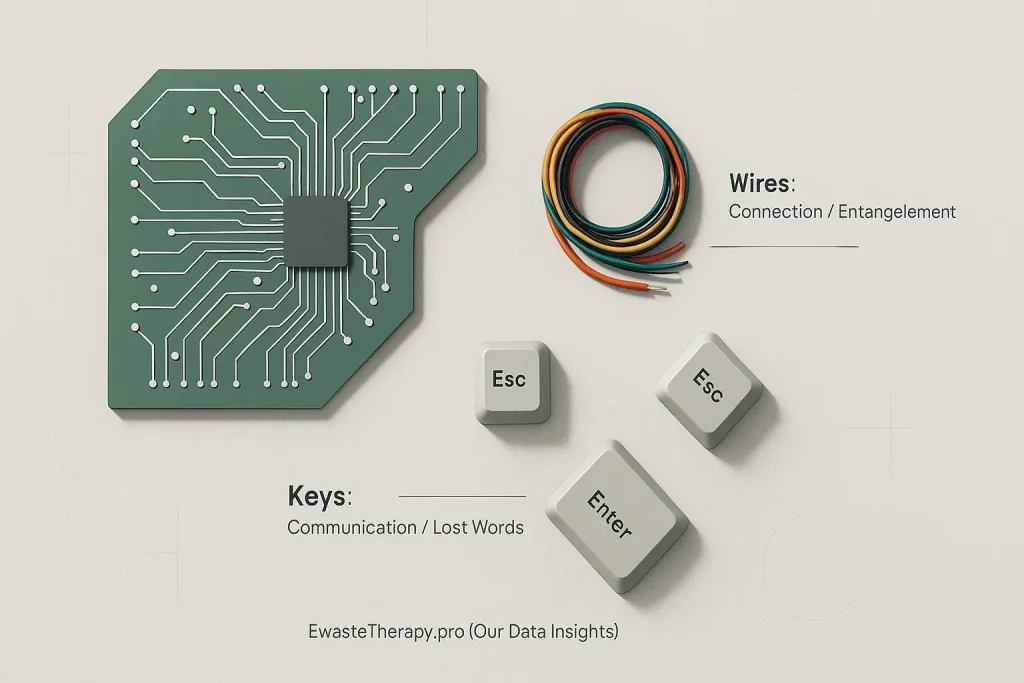Beyond Creation: Why Safe Storage & Display of E-Waste Art Matters
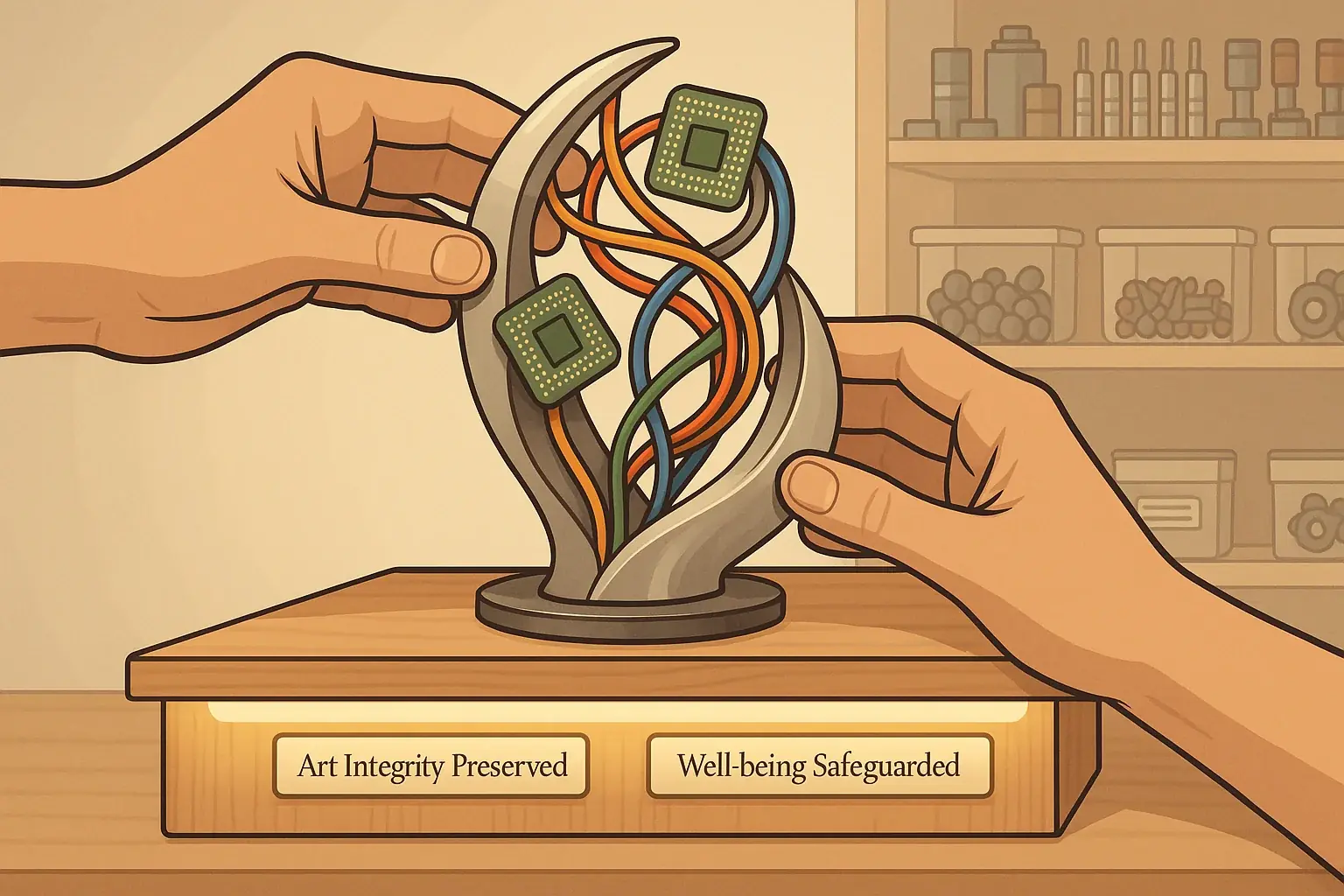
You poured your heart into that e-waste sculpture. Healing happened. Or, you carefully gathered unique components for a future project. What next? EwasteTherapy.pro's analysis of user experiences reveals the creative journey extends far beyond the act of making. The 'afterlife' of your art and its constituent materials is vital. This ongoing care truly continues your therapeutic process, safeguarding both your creation and your well-being.
Many individuals focus intensely on the creation phase. This is understandable. Yet, our user data consistently highlights an unspoken truth about e-waste art. Neglecting proper storage or thoughtful display invites entirely avoidable problems. Physical hazards can emerge: accumulated dust on intricate parts, exposed sharp edges, or even subtle chemical exposure from certain untreated components. Imagine finding your beautiful circuit board collage warped and faded after only a few months. Worse, picture realizing tiny metal shards have escaped a poorly stored box of miscellaneous e-waste. Our findings confirm these are not abstract worries but real user concerns that impact safety and enjoyment.
This leads to a core EwasteTherapy.pro principle. Extend your mindfulness to your art's 'afterlife' and the storage of its source materials. Mindful storage honors the profound transformation these objects have undergone. Thoughtful display preserves the piece's therapeutic energy and its aesthetic integrity. Crucially, it ensures your home or studio environment remains safe for everyone. This practice is not merely practical; our therapeutic framework identifies it as integral to the holistic e-waste art therapy journey we champion, protecting both your art and your peace of mind.
Keeping Your Raw Materials Safe: Best Practices for Unused E-Waste Components
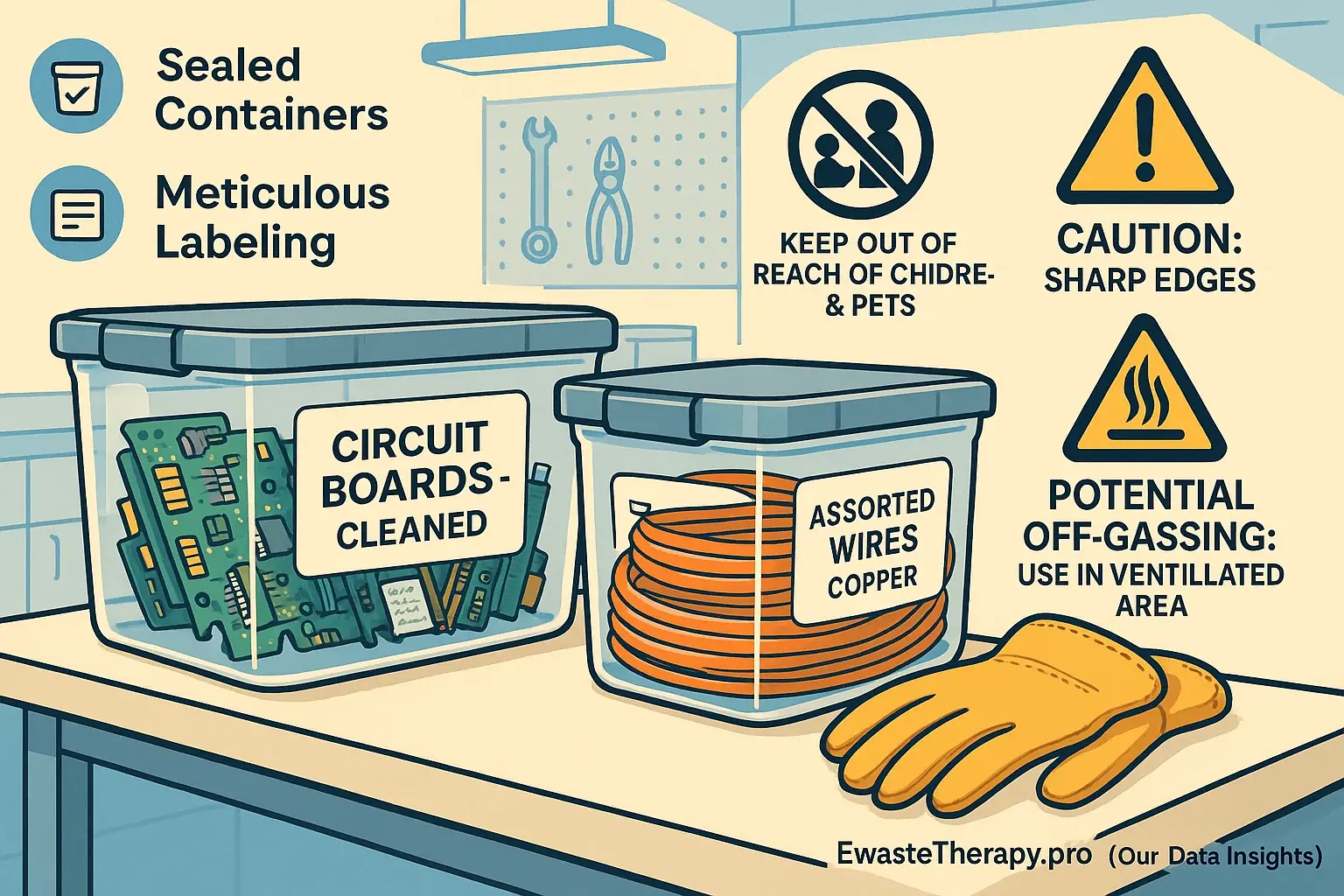
You have gathered fascinating e-waste components. The question arises: how do you store them safely before your next project? EwasteTherapy.pro's research shows proper storage is not merely about organization. It actively mitigates risks. These risks include fine dust, sharp component edges, and potential low-level chemical off-gassing. Safety first, always.
Containment becomes your primary strategy. Our analysis of user practices indicates sturdy, clear, sealable containers are best. Why clear? You can identify contents instantly. This minimizes unnecessary handling and reduces dust disturbance. Label every container meticulously. Think: 'Circuit Boards - Cleaned', 'Assorted Wires - Copper', or 'Plastics - Mixed Batch'. Here is a practical tip many experienced e-waste artists follow: add a small desiccant packet to sealed containers. These packets combat humidity. Humidity accelerates component degradation and can even encourage mold on any lingering organic residues.
Where you store these containers matters significantly. Keep them away from direct sunlight. Shield them from extreme temperature fluctuations. High humidity environments are also detrimental. EwasteTherapy.pro consistently advises storing all e-waste components out of reach. Children and pets must not access them. Remember, even meticulously cleaned components can present hazards if handled improperly or ingested.
These components are not just discards. They are potential art. They hold future therapeutic value. Treating them with respect, even in their dormant storage phase, extends your mindfulness. This careful stewardship honors their journey towards transformation through your creativity.
Ensuring Longevity: How to Preserve Your Finished E-Waste Art Creations
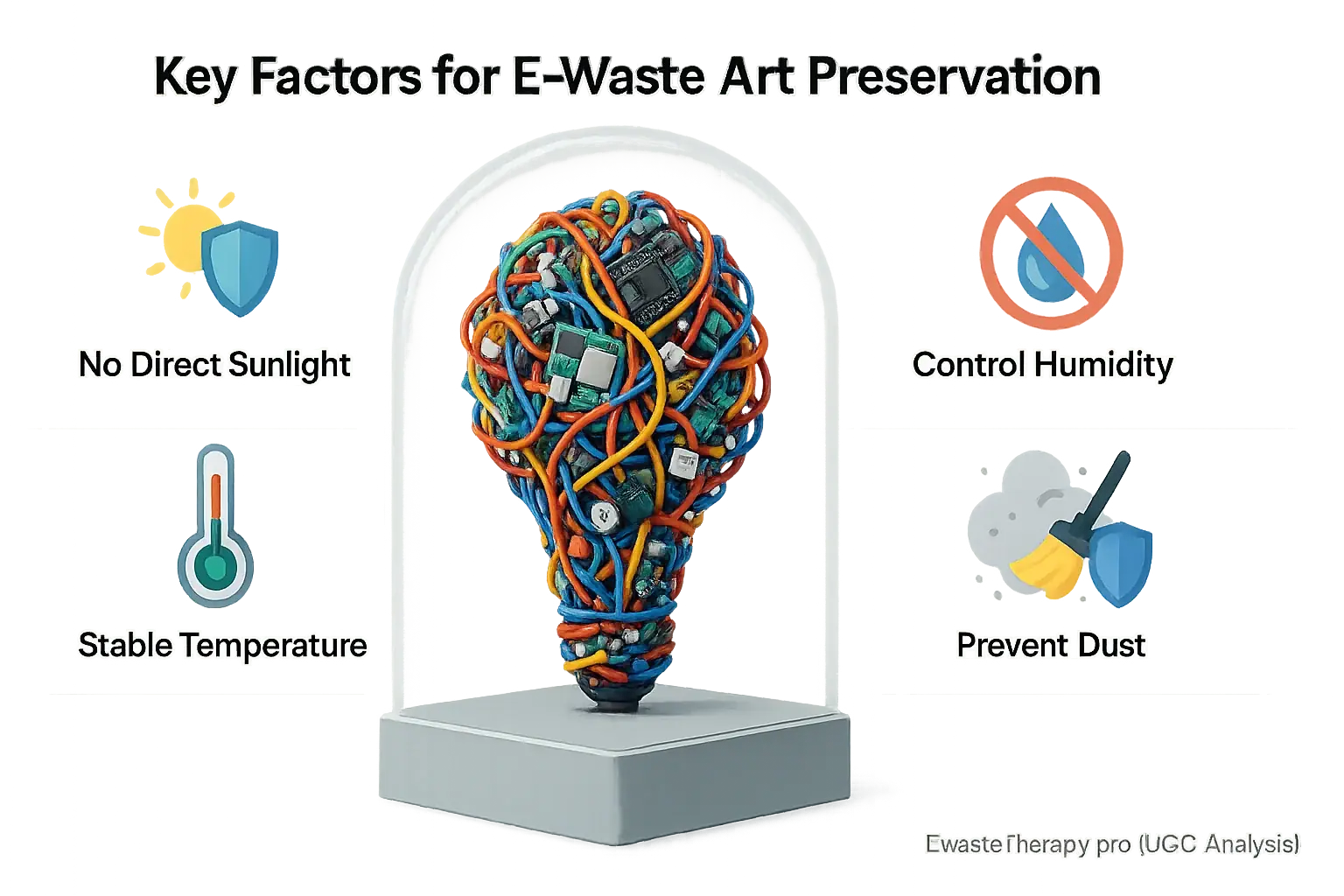
You created something truly unique. A piece of your healing journey. It deserves to last. Finished e-waste art, much like traditional artworks, requires thoughtful protection. Environmental factors can degrade materials over time. This protection maintains both its aesthetic appeal and its profound symbolic integrity for you.
Direct sunlight is a significant threat. It actively fades colors on plastics and circuit boards. Prolonged exposure can even warp delicate e-waste components. High humidity invites corrosion, especially on metal parts. It also weakens many adhesives used in assembly. Consider these elements as slow, persistent challenges to your art. A stable indoor environment, away from direct light and moisture sources, offers the best defense.
Applying a suitable clear sealant or varnish often provides excellent protection. These create an invisible barrier against dust, ambient moisture, and harmful UV rays. This simple step can significantly extend your creation's lifespan. Choose wisely. Ensure any sealant is compatible with the diverse materials in your piece, such as plastics, metals, and printed circuit boards. Many artists find a soft-bristled brush or compressed air ideal for regular, gentle dusting. This method prevents abrasive damage that harsher cleaning could cause to fragile elements.
Preserving your e-waste art also nurtures its therapeutic essence. This act of care extends the life of the physical object. It simultaneously safeguards the memory and transformative energy of its creation. Your art piece remains a vibrant testament to your healing process and creative expression.
Displaying Your Masterpiece: Safety, Meaning & Aesthetic Harmony
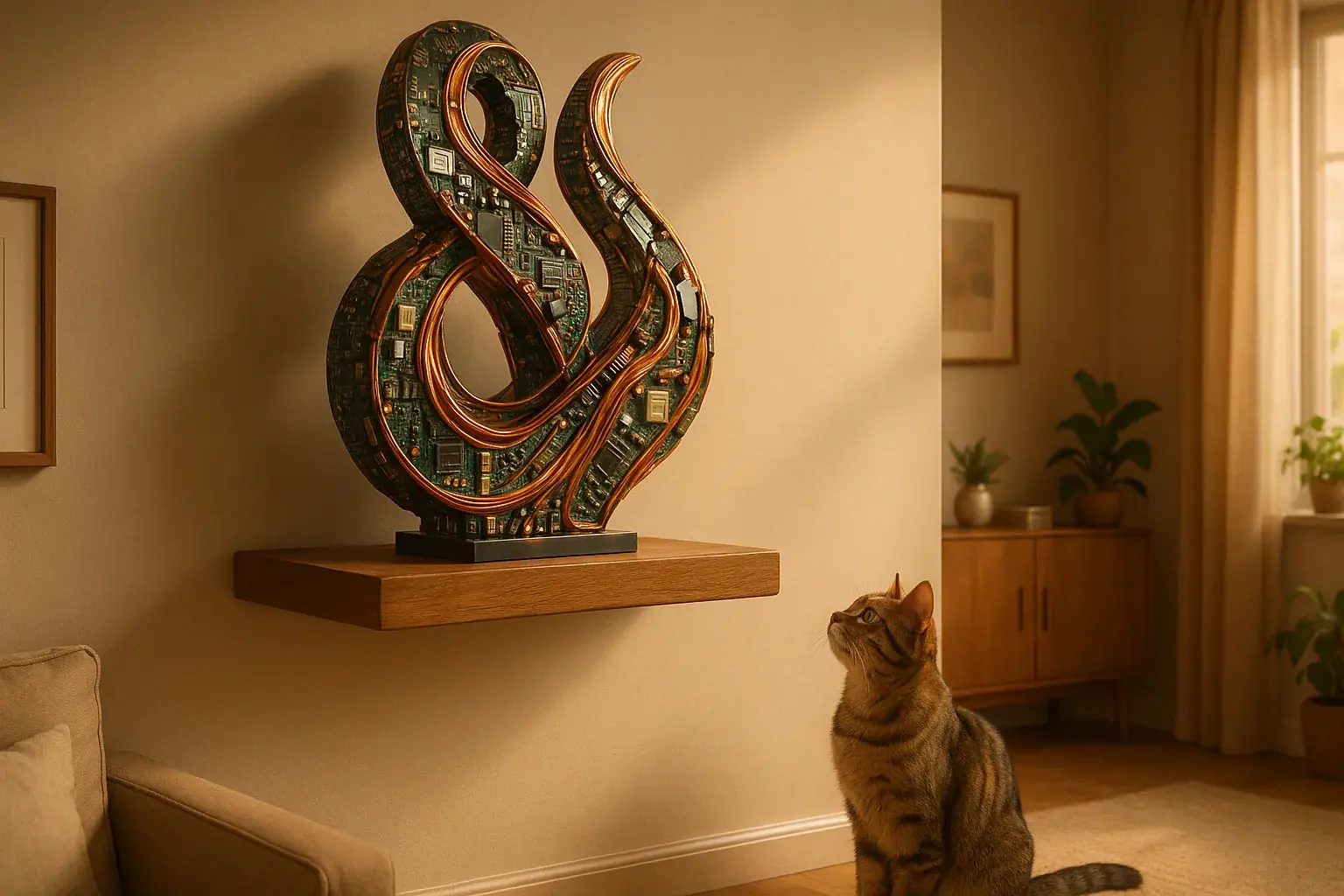
Your e-waste art is more. It is a statement, a piece of your soul. Thoughtful display integrates safety, aesthetics, and the art's deep meaning. This approach ensures your creation truly shines and keeps everyone safe.
Household safety comes first. Secure mounting is non-negotiable with children or pets; heavy pieces need strong wall anchors. Delicate sculptures belong behind glass or high on shelves, safely out of reach. Small, detachable e-waste components present choking hazards, a risk our user data analysis confirms. Imagine a toddler pulling down a sharp-edged sculpture – a nightmare we help you prevent.
Mindful placement enhances your art. Consider where your piece creates maximum impact; does its symbolism resonate in a particular room? Light can play off metallic sheens near windows, while quiet corners aid reflection. Many users report a powerful discovery: displaying e-waste art in a reflective space deepens its therapeutic effect. This transforms the art into an active tool for ongoing well-being.
Honoring your piece matters deeply. Display it with clear intention, recognizing its transformative journey. Discarded tech found new meaning through your hands. Your art embodies this profound healing.
Beyond the Object: Documenting Your E-Waste Art & Its Therapeutic Story
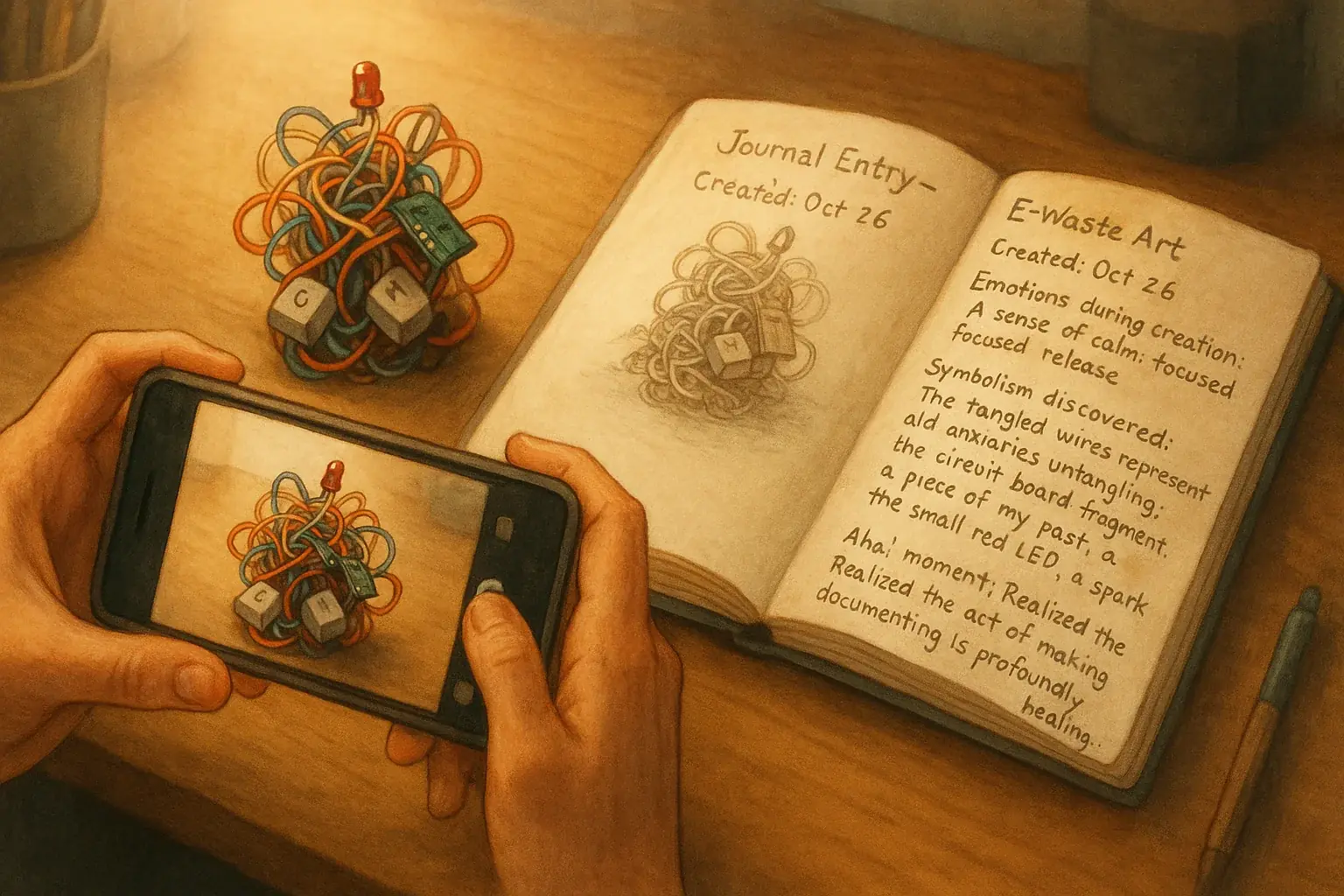
Your e-waste art piece embodies more than its components. It is a snapshot. It reflects your inner world, a distinct moment in your healing journey. Documenting this creation actively extends its therapeutic value. This practice ensures its unique story lives on, long after the physical act of making.
Begin with high-quality photographs. Capture your piece from varied angles. Use different lighting. Visuals alone are not enough. Pair these images with journaling. Note the creation date. Record the emotions you processed. Detail any symbolism discovered in the components. Write down your 'aha!' moments. Many creators find revisiting these documented stories months, even years later, offers fresh insights. This review often reveals personal growth patterns previously unseen, a true testament to developing resilience.
This personal archive, digital or written, becomes a powerful resource. It supports ongoing self-reflection. It stands as a testament to your transformative path. You can share your journey safely, if you choose, without risking the original artwork. The art's impact, through documentation, thus continues to unfold. This act of recording is a vital continuation of the therapeutic process itself.

